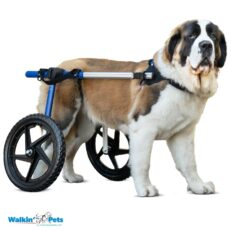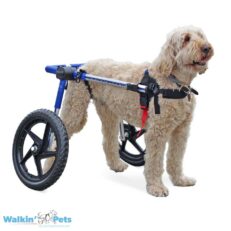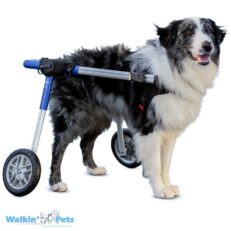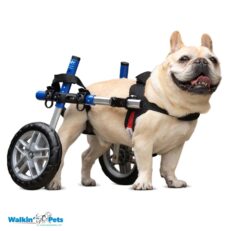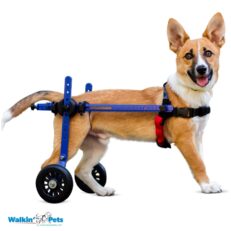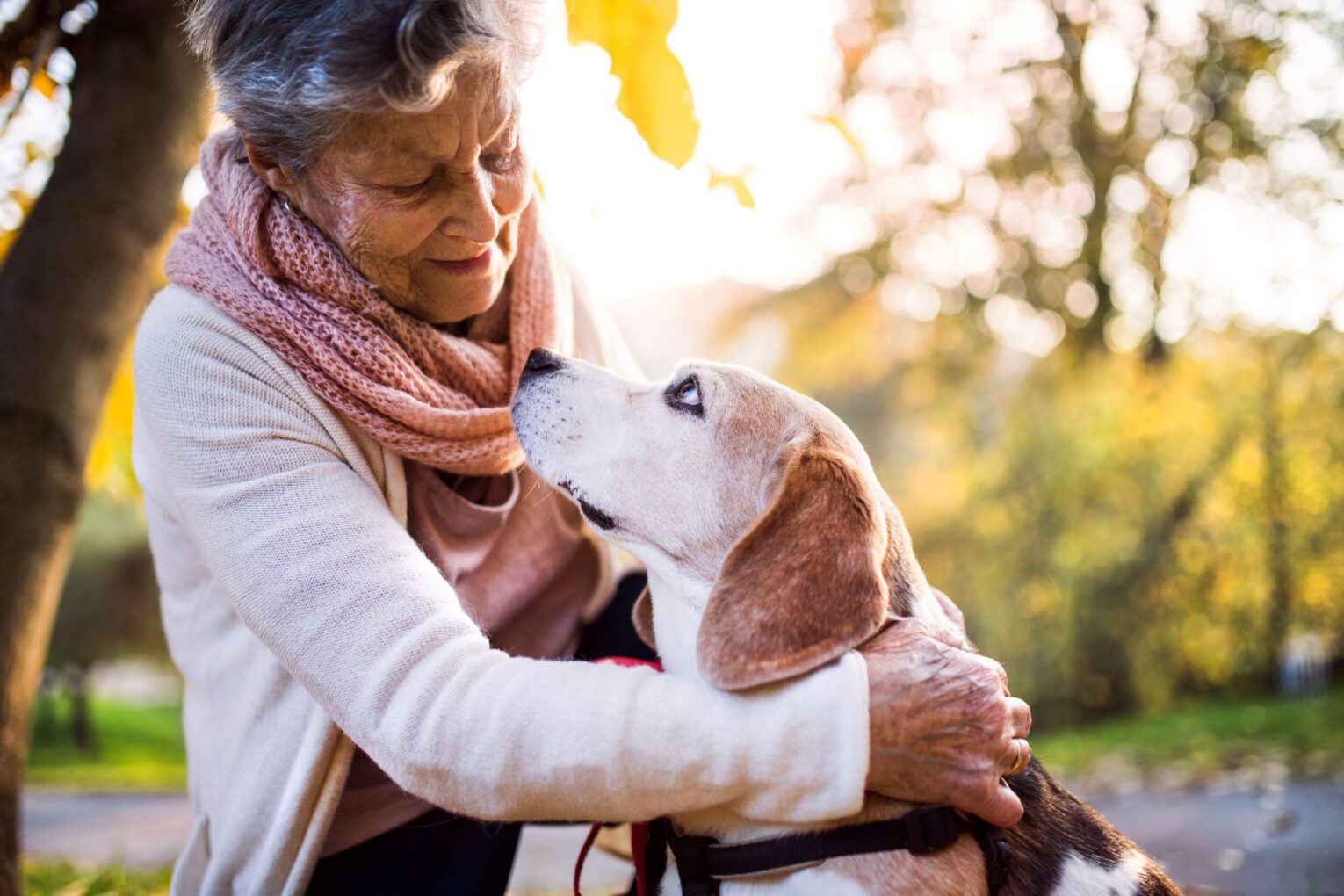
Welcome to our comprehensive guide on caring for aging pets. In this introduction, we aim to underscore the profound importance of offering dedicated care to your senior furry companion. We will delve into the unique challenges and rewards that come with senior pet ownership, setting the stage for what you can expect from this comprehensive guide. The significance of caring for aging pets cannot be overstated. As pet owners, our relationship with our beloved animals matures with time, and they become treasured members of our families. Throughout their lives, they offer us unwavering loyalty, boundless love, and countless cherished memories. Now, as they enter their senior years, they may face a new set of health and lifestyle challenges that call for our attention and care.
Caring for aging pets extends beyond responsibility; it is a heartfelt commitment. It signifies our dedication to ensuring that our loyal companions experience their golden years with comfort, dignity, and the highest possible quality of life. Just as they have filled our lives with joy and companionship, it is our privilege to reciprocate by providing the care and support they need as they navigate this stage of life. The journey of caring for a senior pet brings with it both distinctive challenges and profound joys that differ from the experiences of raising a young, energetic animal. It is vital to acknowledge and embrace these unique aspects of senior pet ownership to provide the best possible care and companionship during this phase of their lives.
One of the primary challenges that senior pet owners face is the increased prevalence of health concerns. Aging pets are more susceptible to various health conditions, including arthritis, diabetes, and heart disease. Consequently, regular veterinary care and vigilant monitoring become paramount to detect and manage these issues promptly. Mobility issues can also become more prevalent as pets age. Conditions like arthritis and joint problems can limit your pet’s ability to move comfortably, affecting their capacity to engage in everyday activities such as walking, climbing, or jumping. Providing them with comfortable dog bedding and possibly introducing ramps or steps can greatly assist them in maintaining their mobility and independence.
Another challenge in caring for senior pets involves making necessary dietary adjustments. As pets age, their nutritional requirements change, necessitating a modification of their diet. Consulting with your veterinarian is essential to determine the most suitable diet and whether nutritional supplements are needed to ensure their health and well-being. Cognitive changes, akin to dementia in humans, are another challenge that can manifest in senior pets. This can lead to confusion and alterations in behavior, which can be distressing for both pets and their owners. To mitigate these changes and enhance their quality of life, providing mental stimulation and maintaining a consistent routine are recommended.
Amidst these challenges, caring for a senior pet brings its own set of joys and rewards. With senior pet ownership comes the potential for a deepened bond between you and your faithful companion. The companionship of a senior pet can be profoundly rewarding, and your connection may intensify as you provide care, comfort, and unwavering love during this stage of life. Senior pets often exhibit calmer and more settled temperaments compared to their younger counterparts. They tend to be less energetic and exuberant, making them excellent companions for tranquil moments and relaxation. The calm temperament of a senior pet can add a sense of serenity and contentment to your home. A poignant joy of caring for a senior pet is their potential to demonstrate increased gratitude and appreciation for your care. As they age and experience the care and attention you provide, they may express their gratitude through their affectionate demeanor. This heightened appreciation reinforces the mutual bond you share, making every day with them special and meaningful.
This guide is intended to be your trusted companion throughout the journey of caring for your aging pet. Within its chapters, you can anticipate discovering a wealth of information and guidance tailored to the unique needs and challenges of senior pet care. You will gain insights into sustaining your pet’s health, encompassing regular check-ups, nutrition, and the management of age-related conditions. This section will equip you with the knowledge needed to ensure your senior pet remains in the best possible health. Tips for enhancing your pet’s mobility and establishing a comfortable living environment will be provided. These recommendations aim to alleviate discomfort and enhance their quality of life as they navigate the challenges of aging. Strategies for nurturing your pet’s emotional and cognitive health will be explored. You will learn how to provide enrichment activities and affectionate care to support their emotional well-being during their senior years. The guide offers guidance on navigating the challenging aspects of end-of-life care with compassion and dignity. This includes considerations for palliative care and guidance on making the difficult decision to say goodbye when the time comes.
To further support you in your senior pet care journey, the guide includes a compilation of resources and references. These resources encompass recommended readings and sources for professional assistance, ensuring that you have access to valuable information

Recognizing the Signs of Aging in Your Beloved Pet
In this chapter, we will delve into the intricacies of the aging process in pets, elucidate the common signs of aging that manifest in both dogs and cats, and underscore the paramount importance of regular veterinary check-ups in safeguarding the well-being of your cherished senior companion.
The aging process in pets is an entirely natural and inescapable facet of their lives. While the pace of aging can vary by species and breed, dogs and cats typically transition into their senior years between the ages of 7 and 10. Smaller breeds often undergo a more gradual aging process compared to their larger counterparts. It is essential to grasp the nuances of this aging process to facilitate superior care for your aging pet.
As pets age, their cells undergo transformative changes that affect various bodily systems. These alterations can result in a diminished capacity to repair damage and uphold overall health. Organs such as the heart, kidneys, and liver may exhibit decreased efficiency over time, rendering them more susceptible to disease or dysfunction. Arthritis and joint-related ailments become increasingly prevalent, potentially leading to reduced mobility and discomfort. Additionally, dental issues, including gum disease and tooth loss, frequently manifest in older pets, necessitating attention and care.
Identifying the telltale signs of aging in your pet is instrumental in administering appropriate care and timely intervention when warranted. These hallmark signs of aging include:
In Dogs:
- Decreased Activity: A dog that was once exuberant and energetic may exhibit reduced activity levels, tiring more quickly during walks or play.
- Joint Stiffness: Arthritis or joint discomfort can engender stiffness, making it challenging for your dog to rise or navigate stairs.
- Weight Fluctuations: Alterations in metabolism or diminished physical activity may lead to weight gain or loss.
- Dental Issues: Dental problems may manifest, presenting as bad breath, tooth loss, or difficulty eating.
- Vision and Hearing Changes: Impairments in vision or hearing may become evident in aging dogs.
In Cats:
- Reduced Activity: Older cats tend to engage in less play and display lower levels of energy.
- Weight Changes: Weight loss is a common occurrence among senior cats, often attributable to dental issues or shifts in appetite.
- Grooming Alterations: Cats may encounter challenges in grooming themselves, resulting in matted fur and hygiene issues.
- Litter Box Concerns: Shifts in litter box behavior, such as increased frequency or instances of accidents, may transpire.
- Increased Vocalization: Certain senior cats may become more vocal, potentially due to cognitive changes.
Regular veterinary check-ups stand as a cornerstone in the care of aging pets, bearing substantial significance for a multitude of reasons. Routine examinations serve as a vital means of detecting age-related health concerns at their inception, facilitating prompt intervention and treatment. Veterinarians possess the expertise to furnish personalized care plans meticulously tailored to address the specific needs of your aging pet. Identifying and managing pain, such as arthritis, holds paramount importance for your pet’s comfort and overall well-being. Vital aspects of pet health, including vaccinations, parasite control, and dental care, retain their significance even as pets enter their senior years. Veterinarians proffer invaluable counsel pertaining to nutrition, exercise, and lifestyle adjustments that can substantively underpin your pet’s health and contentment.
By acquainting yourself with the signs of aging and conscientiously scheduling regular veterinary check-ups, you can ensure that your beloved senior pet embarks on their golden years with the assurance of a comfortable and enriching life. Subsequent chapters will delve deeper into specific facets of senior pet care, providing you with the insights and tools necessary to afford your aging companion the highest possible quality of life.
Nutrition and Diet for Senior Pets: Nourishing Their Golden Years
As our beloved companions grow older, their nutritional requirements evolve, necessitating a shift in their dietary regimen. This chapter provides a comprehensive guide on how to effectively adapt your pet’s diet to support them through their senior years.
One of the most significant changes in an aging pet’s life is a decrease in their energy levels, leading to lower caloric needs. It is crucial for pet owners to recognize this shift and adjust their pet’s diet accordingly. Overfeeding can lead to obesity, which in turn can exacerbate various age-related health issues, including joint discomfort and cardiac problems. Thus, managing the caloric intake of senior pets is a vital aspect of their overall care. Alongside this, the importance of high-quality protein in their diet cannot be overstated. Senior pets require protein that is both high in quality and easy to digest, aiding in the maintenance of muscle mass and overall health.
In addition to these dietary adjustments, certain supplements can play a beneficial role in a senior pet’s diet. Supplements like glucosamine and chondroitin are particularly helpful for pets suffering from joint issues such as arthritis. These supplements aid in maintaining joint health and improving mobility, thus enhancing the quality of life for older pets. Furthermore, the fiber content in a senior pet’s diet is also a point of consideration. A moderate amount of fiber helps in maintaining a healthy digestive system, which is particularly important as pets age. Ensuring proper hydration is another key aspect of caring for senior pets. Older animals are more prone to dehydration, and therefore, constant access to fresh water is essential.
When it comes to selecting the right dog food for senior pets, there are several factors to consider. The food should contain high-quality, easily digestible protein sources, and should be lower in fat to align with their reduced caloric needs. Incorporating foods that include supplements for joint health can be particularly beneficial for aging pets. Additionally, choosing foods with ingredients that are gentle on an older pet’s digestive system is important. Given the unique dietary needs of senior pets, consulting with a veterinarian is recommended to ensure the chosen diet is appropriate for your pet’s specific health requirements.
Finally, managing the weight and addressing the special dietary needs of senior pets are critical for their well-being. Portion control is essential to prevent obesity, and regular exercise should be encouraged to maintain a healthy weight and muscle tone. Regular weight monitoring and adjustments in diet and exercise are necessary to maintain optimal health. Some senior pets may require specialized diets due to specific health conditions, and ensuring adequate hydration is crucial. Additionally, maintaining good dental health is important, as dental issues can impact a senior pet’s ability to eat and digest dog food properly.
In summary, this chapter provides an insightful look into how dietary needs change as pets age and offers guidance on how to best support our furry friends during their golden years. By understanding and catering to these changes, pet owners can ensure that their senior pets continue to lead a healthy and happy life. The upcoming chapters promise to delve deeper into the various aspects of senior pet care, helping pet owners navigate the unique challenges and joys of caring for older pets.

Mobility and Exercise for Senior Pets: Supporting Their Active Comfort
As pets enter their senior years, they face various challenges in mobility and joint health. This chapter offers valuable insights into exercise routines, environmental adjustments, and health management strategies to enhance the quality of life for senior dogs and cats.
Maintaining mobility and comfort is key for senior pets. Regular, low-impact exercises are essential in keeping their joints mobile and muscles toned. Activities should be tailored to their age and physical limitations. For instance, short walks or gentle play sessions are ideal for keeping them engaged without straining their aging bodies. Creating a comfortable living environment is equally important. Soft dog bedding, ramps or stairs for elevated areas, and nonslip surfaces can significantly improve their comfort and safety at home. Regular veterinary check-ups play a crucial role in early identification and management of mobility issues. For pets experiencing joint pain or arthritis, it is important to consult with a veterinarian for effective pain management strategies.
For senior dogs, exercise routines can include short, frequent walks to maintain mobility without overexertion. Swimming can be an excellent low-impact exercise for dogs who enjoy water, as it reduces joint stress. Mental stimulation is also important; activities like hide-and-seek with treats or playing with puzzle toys can keep their minds active while providing physical exercise. Gentle fetch with soft toys can be enjoyable and less strenuous on their joints.
Senior cats also benefit from specific exercises and activities. Engaging them with interactive toys that mimic prey movements can stimulate their natural hunting instincts. Providing scratching posts, feather wands, and cat trees encourages stretching, climbing, and maintaining flexibility. Treat puzzles or food-dispensing toys are great for mental stimulation and physical activity.
Arthritis and joint issues are common concerns in senior pets. Managing these conditions involves a combination of professional veterinary advice, appropriate medication or supplements, and lifestyle adjustments. Keeping pets at an ideal weight can reduce stress on their joints. Providing a warm environment, especially in colder weather, helps alleviate joint pain. Soft dog bedding can offer relief by reducing pressure on their joints. Joint supplements like glucosamine and chondroitin can be beneficial, but it’s important to consult with a veterinarian before adding these to your pet’s diet. Low-impact exercises, such as swimming or gentle walking, can help maintain joint mobility and overall well-being.
This chapter emphasizes the importance of a balanced approach to physical activity and comfort for senior pets. By understanding their specific needs and challenges, pet owners can help their aging companions enjoy a more active, comfortable, and fulfilling life. The subsequent chapters will continue to explore various facets of caring for senior pets, providing guidance and insights to ensure they receive the best possible care in their later years.
Walkin’ Wheels Large Dog Wheelchair
Walkin’ Wheels Med/Large Dog Wheelchair
Walkin’ Wheels MEDIUM Dog Wheelchair
Walkin’ Wheels SMALL Dog Wheelchair
Walkin’ Wheels MINI Dog Wheelchair
Common Health Problems in Aging Pets: Recognizing and Managing Ailments
As pets grow older, they are more susceptible to a range of age-related conditions. This chapter aims to provide pet owners with insights into prevention, early detection, and management strategies for these ailments, ensuring the well-being of their aging companions.
Senior pets often face a variety of health challenges. Arthritis, a prevalent issue, causes joint inflammation and pain, leading to reduced mobility. Dental problems, including periodontal disease and tooth decay, can significantly impact overall health and cause discomfort. Age can also bring a decline in vision and hearing, affecting a pet’s quality of life. Cognitive dysfunction, akin to dementia in humans, may lead to confusion and behavioral changes. Kidney disease, heart conditions, and an increased risk of cancer are also common in older pets.
Prevention and early detection are key to managing these health issues. Regular veterinary check-ups, ideally every six months, are crucial for monitoring health and catching problems early. Maintaining dental health through routine care, considering joint supplements for arthritis-prone breeds, and keeping a close eye on eye and ear health are important preventive measures. A balanced and age-appropriate diet is also essential for overall health.
Managing chronic illnesses in senior pets requires a dedicated approach. Adherence to prescribed medications is vital, even if the pet seems to be improving. Dietary adjustments may be necessary, depending on the specific health condition. It’s also important to adapt the living environment to accommodate the pet’s needs, such as providing ramps for easier mobility. Regular veterinary check-ups are crucial for monitoring the progression of any chronic illness and adjusting treatment plans accordingly. Providing a comfortable and stress-free environment can greatly enhance a senior pet’s quality of life. For conditions causing pain, developing a comprehensive pain management plan with the veterinarian is important.
It’s essential to remember that each pet is unique, and their healthcare needs will vary. A close partnership with a veterinarian is indispensable in providing the best care for an aging pet. The subsequent chapters in this series will continue to explore various facets of senior pet care, offering guidance and support to pet owners in ensuring the comfort and well-being of their beloved senior pets.
Quality of Life and End-of-Life Care for Your Senior Pet
This chapter addresses the sensitive and emotionally challenging aspects of caring for an aging pet, particularly as they approach the end of their life. It provides guidance on assessing the quality of life of senior pets, making difficult decisions regarding end-of-life care, and coping with the loss of a cherished companion.
Assessing a senior pet’s quality of life is crucial in ensuring their remaining time is comfortable and dignified. Key factors to evaluate include pain and discomfort, mobility, appetite and weight, hydration, cognitive function, and their ability to find joy and engagement in daily activities. These aspects can provide insight into whether a pet is still experiencing a good quality of life or if they are suffering.
One of the most challenging responsibilities of a pet owner is making decisions about end-of-life care. This involves consulting with veterinarians to understand the pet’s condition and prognosis, weighing the benefits of treatment against the quality of life, considering palliative care options, and possibly, making the heart-wrenching decision of euthanasia. The timing of these decisions is never easy, but it should always center on the pet’s well-being and dignity.
The loss of a beloved senior pet is a profound experience, and coping with this grief is a personal journey. It’s important to allow oneself to grieve and find ways to memorialize the pet. This could involve creating physical memorials or engaging in activities that honor the pet’s memory, like volunteering or donations. Sharing feelings with supportive friends, family, or support groups can also provide comfort. With time, some pet owners may find themselves ready to welcome a new pet into their lives, continuing the cycle of love and companionship.
This chapter emphasizes that the journey with a senior pet, even in its final stages, is filled with love, care, and respect. It guides pet owners through the process of ensuring their pets’ comfort and dignity in their final days, and coping with the inevitable grief that follows their loss. Remembering the cherished moments and the bond shared with a senior pet can eventually bring solace and peace.
Conclusion
In this comprehensive guide to senior pet care, we’ve journeyed through the essential aspects of nurturing and supporting aging pets. This guide has offered a deep dive into the nuances of caring for our older animal companions, ensuring they live their golden years in the best possible way.
Understanding the signs of aging in pets is the first step in providing them with the necessary care. As pets grow older, they exhibit various age-related health conditions that require attention and understanding from their caregivers. Adjusting their diet to meet changing nutritional needs is another critical aspect. This involves not only choosing the right senior pet food but also managing their weight and specific dietary requirements to maintain their health and vigor.
Exercise and mobility are vital for senior pets. Keeping them active through low-impact exercises tailored to their capabilities is essential in maintaining their physical health and mental well-being. Additionally, being aware of common health problems in aging pets and focusing on their prevention, early detection, and management is key to ensuring their comfort and longevity.
One of the most challenging yet crucial aspects of senior pet care is assessing their quality of life, especially as they near the end of their journey. This involves making difficult decisions about end-of-life care, ensuring that our beloved pets are comfortable, pain-free, and dignified during their final days. Coping with the loss of a senior pet is an emotional process, and finding ways to navigate this grief is an integral part of the journey.
For those seeking further guidance and support in senior pet care, various resources are available. Regular veterinary consultations are paramount in addressing specific health needs. Additionally, numerous books, online communities, and professional support services offer invaluable information and assistance. For pets in their final stages, exploring pet hospice and palliative care options can provide the necessary support to ensure a peaceful and comfortable transition.
Caring for a senior pet is a deeply rewarding experience that comes with its unique set of challenges and joys. It’s a journey of love, patience, and dedication, ensuring that our aging companions enjoy a life filled with comfort, care, and cherished moments. Through this guide, pet owners are equipped with the knowledge and tools to provide the best possible life for their senior pets, celebrating and honoring the special bond they share.

